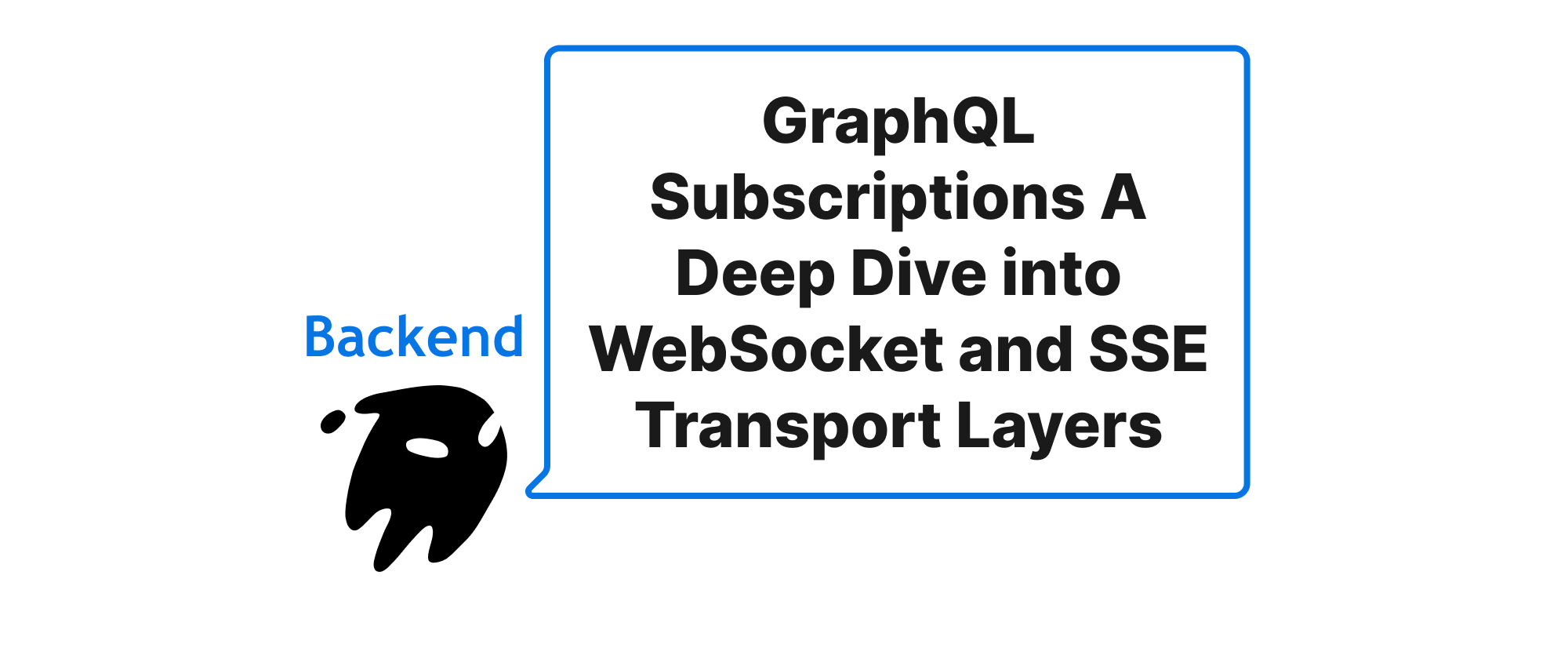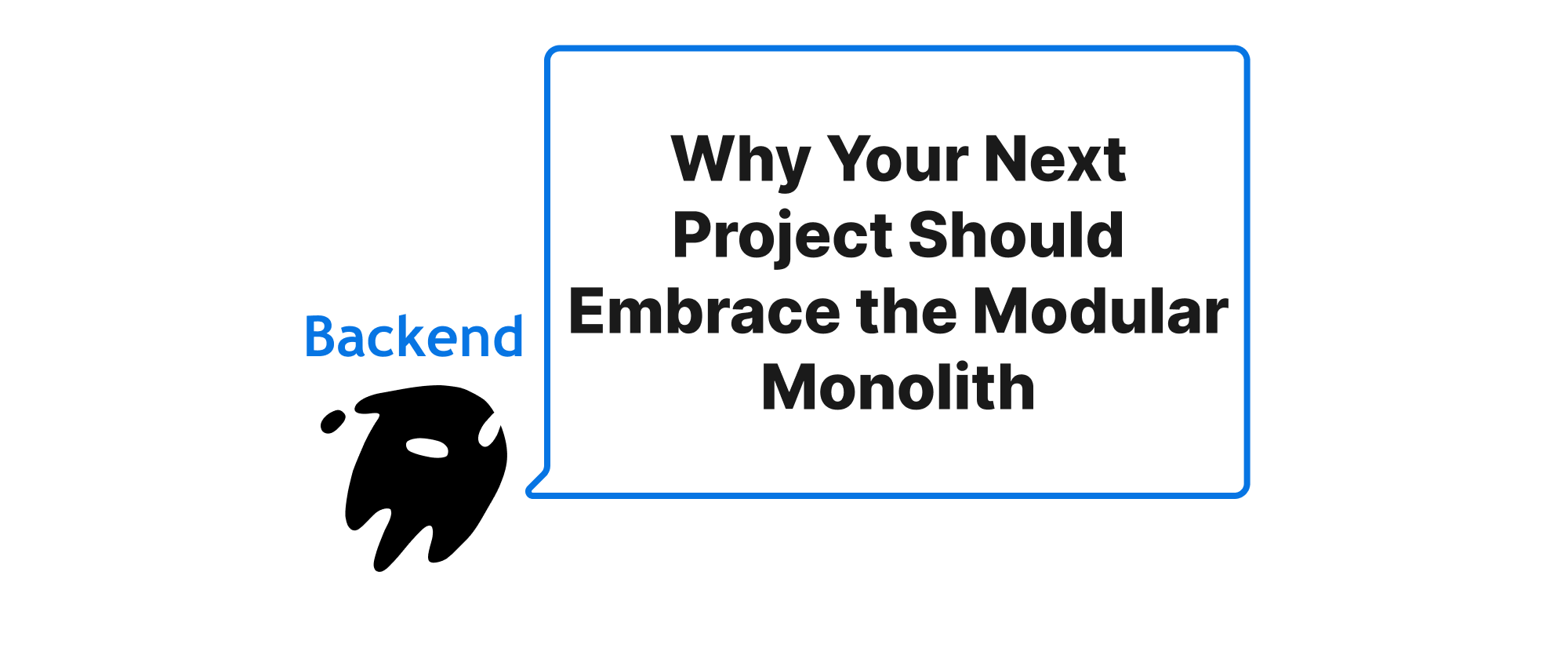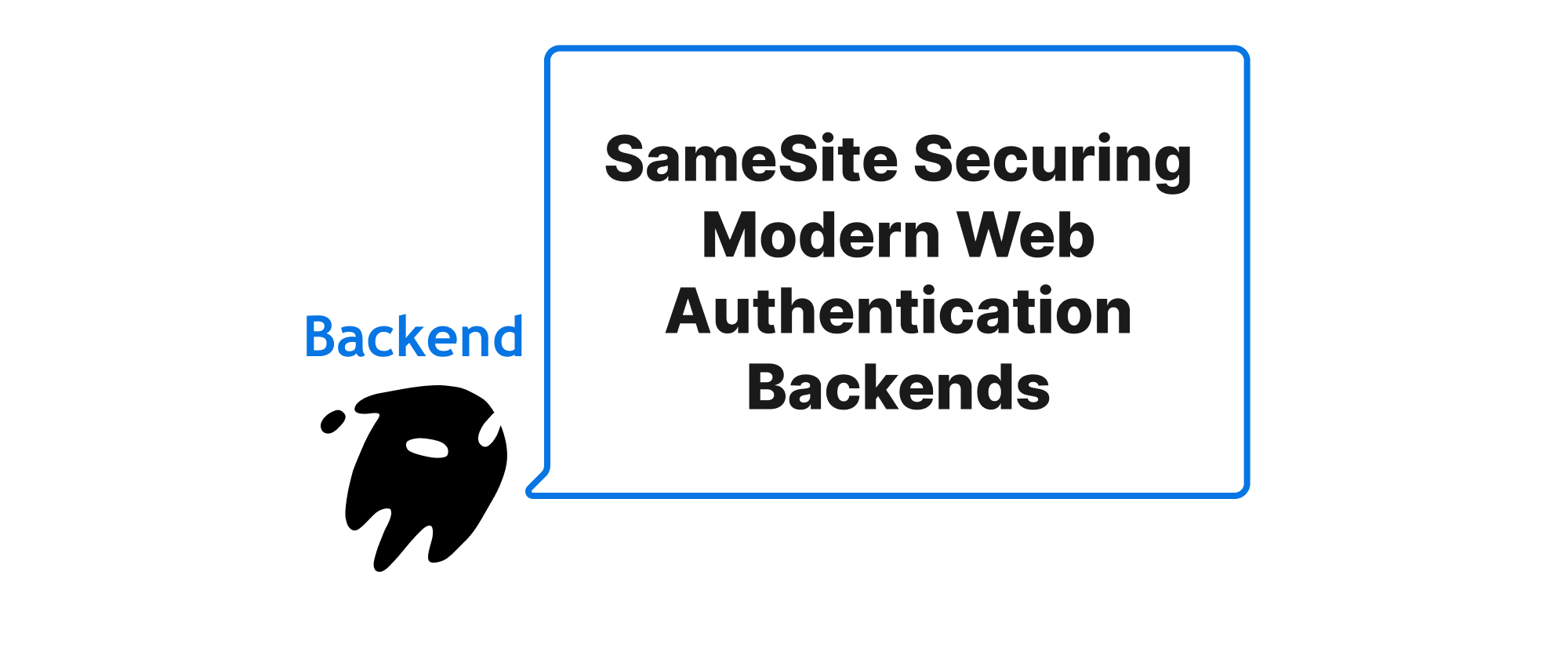GraphQL Subscriptions A Deep Dive into WebSocket and SSE Transport Layers
Daniel Hayes
Full-Stack Engineer · Leapcell

Introduction
In today's dynamic web landscape, real-time data updates are no longer a luxury but a fundamental expectation. From live chat applications and collaborative docs to financial dashboards and IoT monitoring, users demand instant feedback and up-to-the-minute information. GraphQL, with its powerful data fetching capabilities, addresses this need through its Subscription feature, enabling clients to receive real-time updates from the server. However, beneath the elegant GraphQL Subscription API lies a crucial decision: how will these real-time messages be transported? This brings us to a foundational battle between two prominent Web technologies: WebSockets and Server-Sent Events (SSE). Understanding their nuances, strengths, and weaknesses is paramount for backend developers aiming to build robust, scalable, and efficient real-time GraphQL applications. This article will delve into the core differences between these transport layers, exploring their principles, implementation strategies, and practical application scenarios to guide you in making an informed choice.
Core Concepts
Before we dive into the battle, let's establish a clear understanding of the key technologies involved in this discussion.
GraphQL Subscriptions
GraphQL Subscriptions are a powerful feature in GraphQL that allows clients to subscribe to events from the server. Unlike queries (which fetch data once) and mutations (which modify data), subscriptions maintain a persistent connection between the client and the server. When a specific event occurs on the server, a message is pushed to all subscribed clients in real-time. This is achieved by defining a Subscription type in your GraphQL schema, exposing fields that clients can subscribe to.
type Subscription { commentAdded(postId: ID!): Comment postLiked(postId: ID!): Post }
When a client subscribes to commentAdded, the server will push new Comment objects whenever a new comment is added to the specified postId.
WebSockets
WebSockets provide a full-duplex, persistent communication channel over a single TCP connection. This means that once a WebSocket connection is established, both the client and the server can send and receive messages independently and simultaneously. This bi-directional capability makes WebSockets ideal for applications requiring frequent, low-latency, two-way communication, such as instant messaging, online gaming, and live collaboration tools.
Server-Sent Events (SSE)
Server-Sent Events (SSE) are a standard for pushing one-way event data from a server to a client over a single HTTP connection. Unlike WebSockets, SSE is uni-directional – data flows only from the server to the client. This makes SSE particularly well-suited for scenarios where the client primarily needs to receive updates without necessarily sending frequent data back to the server. Think of stock tickers, news feeds, or real-time dashboards where the server is the primary source of information. SSE also benefits from being built on top of HTTP, making it firewall-friendly and often simpler to implement for server pushing.
The Transport Layer Battle
Now, let's compare WebSockets and SSE in the context of GraphQL Subscriptions, examining their principles, implementation, and application scenarios.
WebSockets Principles and Implementation with GraphQL Subscriptions
WebSockets provide a highly efficient and versatile transport for GraphQL Subscriptions due to their bi-directional nature.
Principles:
- Persistent Connection: A single TCP connection is established and kept open.
- Full-Duplex: Both client and server can send and receive messages concurrently.
- Low Overhead: Once the handshake is complete, data frames are smaller than HTTP requests.
- Protocol Agnostic: WebSockets can transport any type of data (text, binary).
Implementation:
Implementing GraphQL Subscriptions over WebSockets typically involves a dedicated WebSocket server or a compatible HTTP server that supports WebSocket upgrades. Libraries like graphql-ws or subscriptions-transport-ws (though the latter is deprecated in favor of graphql-ws) are commonly used on the server-side to handle the GraphQL over WebSocket protocol.
Let's look at a simplified Node.js example using graphql-ws with Express and ws:
// server.js import express from 'express'; import { createServer } from 'http'; import { WebSocketServer } from 'ws'; import { useServer } from 'graphql-ws/lib/use/ws'; import { execute, subscribe } from 'graphql'; import { makeExecutableSchema } from '@graphql-tools/schema'; import { PubSub } from 'graphql-subscriptions'; // For simple event publishing const pubsub = new PubSub(); const COMMENTS_CHANNEL = 'COMMENTS_CHANNEL'; const typeDefs = ` type Comment { id: ID! content: String! } type Query { hello: String } type Mutation { addComment(content: String!): Comment } type Subscription { commentAdded: Comment } `; const resolvers = { Query: { hello: () => 'Hello GraphQL!', }, Mutation: { addComment: (parent, { content }) => { const newComment = { id: String(Date.now()), content }; pubsub.publish(COMMENTS_CHANNEL, { commentAdded: newComment }); return newComment; }, }, Subscription: { commentAdded: { subscribe: () => pubsub.asyncIterator(COMMENTS_CHANNEL), }, }, }; const schema = makeExecutableSchema({ typeDefs, resolvers }); const app = express(); const httpServer = createServer(app); // Create WebSocket server for GraphQL Subscriptions const wsServer = new WebSocketServer({ server: httpServer, path: '/graphql', // The WebSocket endpoint }); useServer( { schema, execute, subscribe, onConnect: (ctx) => { console.log('Client connected for GraphQL Subscription'); // You can implement authentication or authorization here }, onDisconnect: (ctx, code, reason) => { console.log('Client disconnected from GraphQL Subscription'); }, }, wsServer ); httpServer.listen(4000, () => { console.log('GraphQL server running on http://localhost:4000'); console.log('GraphQL Subscriptions available at ws://localhost:4000/graphql'); });
On the client side, a WebSocket client library like subscriptions-transport-ws (or graphql-ws client) is used.
// client.js (example using a simplified client setup) import { createClient } from 'graphql-ws'; const client = createClient({ url: 'ws://localhost:4000/graphql', }); const COMMENT_SUBSCRIPTION = ` subscription OnCommentAdded { commentAdded { id content } } `; (async () => { const onNext = ({ data }) => { console.log('Received comment:', data.commentAdded); }; const onError = (error) => { console.error('Subscription error:', error); }; const unsubscribe = client.subscribe( { query: COMMENT_SUBSCRIPTION }, { next: onNext, error: onError, complete: () => console.log('Subscription complete') } ); // For demonstration, you might unsubscribe after some time or on user action // setTimeout(() => { // unsubscribe(); // }, 10000); })();
Application Scenarios for WebSockets:
- Real-time Chat Applications: Bi-directional communication is essential for sending and receiving messages.
- Collaborative Editors: Multiple users updating the same document requires instant bi-directional同步.
- Online Gaming: Low-latency, two-way communication for game state updates and player actions.
- Financial Trading Platforms: High-frequency updates and user order placements.
Server-Sent Events Principles and Implementation with GraphQL Subscriptions
SSE offers a simpler, HTTP-based approach for pushing data from the server.
Principles:
- Uni-directional: Data flows only from server to client.
- HTTP-based: Uses standard HTTP for connections, making it firewall-friendly.
- Automatic Reconnection: Browsers automatically re-establish connections if they are dropped.
- Simplicity: Simpler API than WebSockets for server-to-client communication.
Implementation:
To use SSE for GraphQL Subscriptions, you would typically have an HTTP endpoint that streams text/event-stream data. Each event is formatted as data: {json_payload}\n\n. GraphQL servers supporting SSE for subscriptions would usually map a special HTTP POST request to this SSE stream.
Here's a conceptual (and simplified) server-side example for SSE with GraphQL, assuming a custom implementation or a library that provides SSE support for GraphQL Subscriptions:
// server-sse.js (conceptual SSE implementation for GraphQL Subscriptions) import express from 'express'; import { makeExecutableSchema } from '@graphql-tools/schema'; import { PubSub } from 'graphql-subscriptions'; import { execute, subscribe } from 'graphql'; const pubsub = new PubSub(); const COMMENTS_CHANNEL = 'COMMENTS_CHANNEL'; const typeDefs = ` type Comment { id: ID! content: String! } type Query { hello: String } type Mutation { addComment(content: String!): Comment } type Subscription { commentAdded: Comment } `; const resolvers = { Query: { hello: () => 'Hello GraphQL SSE!' }, Mutation: { addComment: (parent, { content }) => { const newComment = { id: String(Date.now()), content }; pubsub.publish(COMMENTS_CHANNEL, { commentAdded: newComment }); return newComment; }, }, Subscription: { commentAdded: { subscribe: () => pubsub.asyncIterator(COMMENTS_CHANNEL), }, }, }; const schema = makeExecutableSchema({ typeDefs, resolvers }); const app = express(); app.use(express.json()); // Mutation endpoint (regular HTTP POST) app.post('/graphql', async (req, res) => { const { query, variables } = req.body; const result = await execute({ schema, document: query, variableValues: variables }); res.json(result); }); // SSE endpoint for subscriptions app.post('/graphql-sse', async (req, res) => { res.setHeader('Content-Type', 'text/event-stream'); res.setHeader('Cache-Control', 'no-cache'); res.setHeader('Connection', 'keep-alive'); res.flushHeaders(); // Flush headers to client const { query, variables, operationName } = req.body; try { const subscriber = await subscribe({ schema, document: query, variableValues: variables, operationName, contextValue: {}, // Add context if needed }); if (subscriber.errors) { res.write(`event: error\ndata: ${JSON.stringify(subscriber.errors)}\n\n`); res.end(); return; } // Subscribe to the async iterator const iterator = subscriber[Symbol.asyncIterator](); const sendEvent = async () => { try { const { value, done } = await iterator.next(); if (done) { res.write('event: complete\ndata: Subscription completed\n\n'); res.end(); return; } res.write(`event: message\ndata: ${JSON.stringify(value)}\n\n`); // Schedule next event send process.nextTick(sendEvent); // Or use a more controlled loop/emitter } catch (error) { res.write(`event: error\ndata: ${JSON.stringify({ message: error.message })}\n\n`); res.end(); } }; sendEvent(); // Start sending events req.on('close', () => { // Clean up subscription when client disconnects if (subscriber.return) { subscriber.return(); // Terminate the async iterator } console.log('Client disconnected from SSE subscription'); }); } catch (error) { res.write(`event: error\ndata: ${JSON.stringify({ message: error.message })}\n\n`); res.end(); } }); app.listen(4001, () => { console.log('GraphQL server with SSE running on http://localhost:4001 and sse at http://localhost:4001/graphql-sse'); });
On the client side, the browser's native EventSource API is used:
// client-sse.js const COMMENT_SUBSCRIPTION_QUERY = ` subscription OnCommentAdded { commentAdded { id content } } `; // Simulate a POST request to initiate the SSE stream async function subscribeWithSSE() { const response = await fetch('http://localhost:4001/graphql-sse', { method: 'POST', headers: { 'Content-Type': 'application/json', 'Accept': 'text/event-stream' // Indicate client expects SSE }, body: JSON.stringify({ query: COMMENT_SUBSCRIPTION_QUERY }) }); if (!response.ok) { console.error('Failed to initiate SSE subscription:', response.statusText); return; } // Use a ReadableStreamReader to process the event stream const reader = response.body.getReader(); const decoder = new TextDecoder(); let buffer = ''; while (true) { const { done, value } = await reader.read(); if (done) { console.log('SSE stream finished.'); break; } buffer += decoder.decode(value, { stream: true }); // Process full events from the buffer let eventBoundary; while ((eventBoundary = buffer.indexOf('\n\n')) !== -1) { const eventData = buffer.substring(0, eventBoundary).trim(); buffer = buffer.substring(eventBoundary + 2); // Move buffer past the event if (eventData.startsWith('event: message')) { const dataPayload = eventData.substring('event: message\ndata: '.length); try { const parsedData = JSON.parse(dataPayload); console.log('Received SSE comment:', parsedData.data.commentAdded); } catch (e) { console.error('Failed to parse SSE data:', e, dataPayload); } } else if (eventData.startsWith('event: error')) { console.error('SSE Error:', eventData); } else if (eventData.startsWith('event: complete')) { console.log('SSE Subscription complete notification.'); reader.cancel(); // Stop reading break; } } } } subscribeWithSSE();
Note: While the EventSource API simplifies client-side consumption, the server-side GraphQL over SSE protocol for initiating subscriptions usually involves an initial HTTP POST request specifying the subscription query, and then the server streams the text/event-stream response. The @graphql-yoga/graphql-sse library or similar can provide a more robust server-side implementation.
Application Scenarios for SSE:
- Real-time Dashboards: Displaying metrics, analytics, or stock prices where data flows primarily from server to client.
- News Feeds: Pushing new articles or updates to users.
- Live Sports Scores: Updating scores and game events in real-time.
- Notification Systems: Sending push notifications to users.
Conclusion
The choice between WebSockets and SSE as the transport layer for your GraphQL Subscriptions ultimately hinges on your application's specific requirements. WebSockets offer superior bi-directional communication, making them the go-to for interactive scenarios like chat and collaborative editing that demand low-latency, two-way data exchange. Conversely, SSE provides a simpler, HTTP-friendly solution for uni-directional server-to-client data pushing, perfectly suited for real-time dashboards, news feeds, and notification systems where the client primarily consumes updates. By carefully evaluating the nature of your real-time data flow, you can select the transport layer that best optimizes performance, complexity, and resource utilization for your GraphQL Subscriptions.
In essence, WebSockets empower interactive real-time experiences, while SSE excels at efficient passive data consumption.


